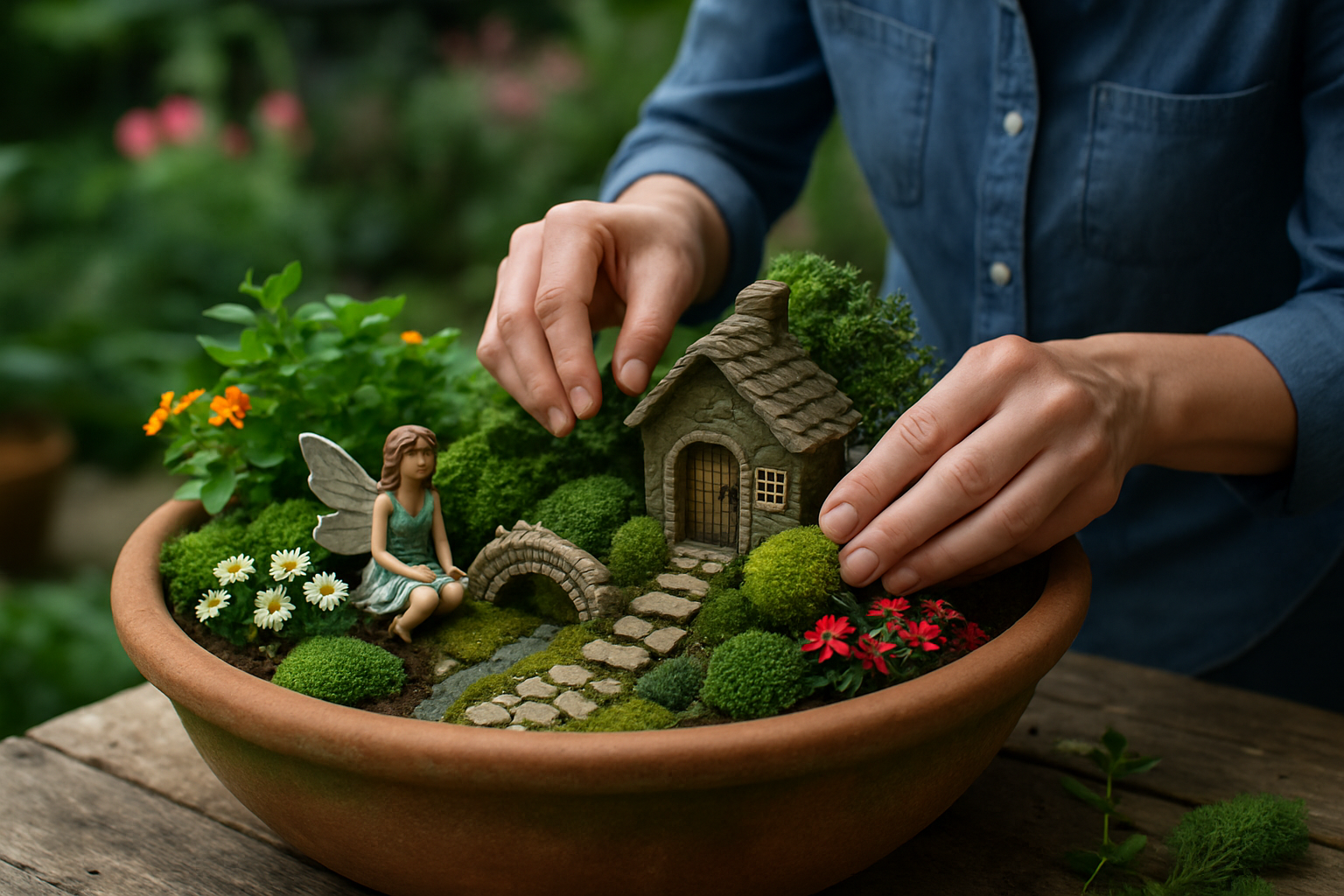Whimsical Wonderlands: The Rise of Fantastical Fairy Gardens
Welcome to a world where imagination knows no bounds and miniature magic reigns supreme. Fairy gardens, once a quaint hobby, have blossomed into a full-fledged design trend, captivating both young and old alike. These enchanting miniature landscapes offer a delightful escape from the ordinary, inviting us to create and nurture our own pocket-sized realms of wonder right in our homes or gardens.

Initially, fairy gardens were simple affairs - a small plant or two, perhaps a tiny house, and a figurine. But as interest grew, so did the complexity and creativity of these miniature landscapes. Today, fairy gardens range from modest tabletop displays to elaborate outdoor installations, each a unique expression of its creator’s vision and imagination.
The Anatomy of a Fairy Garden
At its core, a fairy garden is a miniature landscape designed to evoke a sense of magic and whimsy. While there are no hard and fast rules, most fairy gardens share some common elements:
-
Plants: Typically small-scale plants that mimic full-sized trees and shrubs in miniature. Succulents, mosses, and dwarf varieties of common plants are popular choices.
-
Structures: Tiny houses, castles, or other dwellings for the garden’s imaginary inhabitants.
-
Accessories: Miniature furniture, tools, and decorative elements that bring the scene to life.
-
Paths and waterways: Small pebbles or sand to create paths, and blue glass or resin to simulate water features.
-
Fairy figurines: While not always included, these tiny magical beings are often the star attractions of the garden.
From Hobby to Home Decor Trend
What started as a niche hobby has evolved into a significant trend in home and garden decor. Major retailers now offer extensive lines of fairy garden supplies, from miniature furniture to tiny garden tools. Social media platforms like Instagram and Pinterest are awash with fairy garden inspiration, showcasing increasingly elaborate and creative designs.
This trend has also sparked a revival in handcrafting. Many enthusiasts prefer to create their own accessories using natural materials or upcycled items, adding a personal touch to their miniature worlds. This DIY aspect has contributed to the trend’s popularity, appealing to those seeking a creative, hands-on hobby.
The Psychology Behind the Magic
The appeal of fairy gardens goes beyond mere aesthetics. Psychologists suggest that creating and tending to these miniature worlds can have therapeutic benefits. The act of designing and maintaining a fairy garden can be meditative, offering a sense of control and accomplishment in a world that often feels chaotic.
For children, fairy gardens can be powerful tools for developing imagination and storytelling skills. They provide a tangible space for creative play, encouraging children to invent narratives and characters for their miniature worlds.
Adults, too, find solace in these magical creations. In an era of digital overload, fairy gardens offer a tactile, analog experience that connects us to nature and our own creativity. They serve as a reminder of the magic and wonder that still exists in the world, if only we take the time to look for it.
Innovative Approaches to Fairy Gardening
As the trend evolves, enthusiasts are finding new and innovative ways to incorporate fairy gardens into their lives:
-
Terrarium Fairy Gardens: Combining the popularity of terrariums with fairy garden elements, these enclosed miniature worlds are perfect for small spaces or offices.
-
Fairy Garden Parties: Event planners are incorporating fairy garden themes into children’s parties and even adult gatherings, creating immersive magical experiences.
-
Educational Tools: Schools and libraries are using fairy gardens as educational tools, teaching children about plant care, ecosystem balance, and creative storytelling.
-
Seasonal Fairy Gardens: Some enthusiasts change their fairy garden designs with the seasons, creating ever-evolving displays that reflect the changing world around them.
-
Tech-Enhanced Fairy Gardens: Incorporating small LED lights or even tiny solar panels, these gardens blur the line between fantasy and modern technology.
The Future of Fairy Gardens
As we look to the future, the fairy garden trend shows no signs of losing its magic. In fact, it’s likely to evolve in exciting new directions. We may see the incorporation of augmented reality technology, allowing viewers to see animated fairies flitting through the gardens via smartphone apps. 3D printing technology could revolutionize the creation of custom fairy garden accessories, allowing for even more personalized and intricate designs.
Moreover, as the world becomes increasingly urbanized, fairy gardens may play a crucial role in keeping us connected to nature, even in the smallest of spaces. They offer a way to bring a bit of green and a touch of whimsy into our lives, no matter where we live.
In conclusion, fairy gardens represent more than just a fleeting trend in home and garden decor. They embody our enduring need for magic, creativity, and connection to nature. Whether you’re a seasoned gardener or a novice looking for a new hobby, creating a fairy garden offers a unique opportunity to cultivate not just plants, but imagination and wonder. So why not sprinkle a little fairy dust on your decor and see what magic grows?





